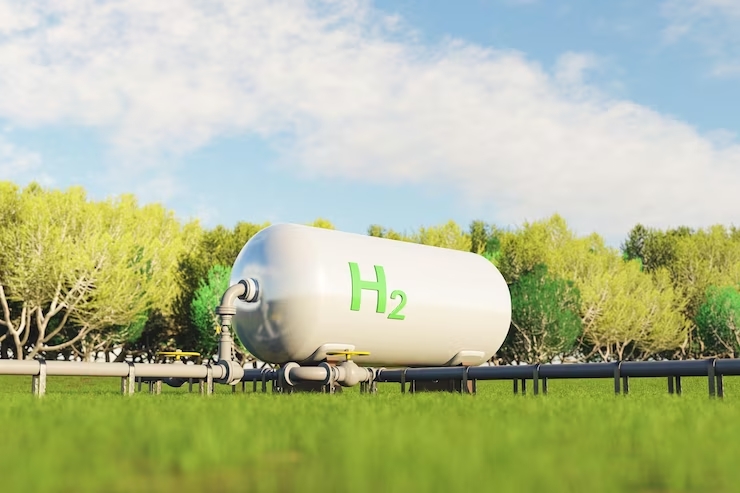
Executive Summary:
As the world confronts environmental challenges and shifts towards renewable energy, the focus on innovative energy storage and fuel technologies is intensifying. Sodium batteries and hydrogen fuel stand out as promising solutions for transforming transportation and energy systems, driven by their potential for high energy density and clean energy, respectively. This shift is not only a response to the urgent need for sustainability but also reflects a growing investment interest in technologies that promise a greener planet.
Advancements in Sodium Battery Technology – Discusses sodium batteries as a cost-effective and environmentally friendly alternative to lithium-ion batteries, emphasizing their potential impact on the electric vehicle market and renewable energy storage. Read more.
The Potential of Hydrogen Fuel – Explores hydrogen fuel’s role in sustainable energy, highlighting its applications in transportation and its integration into existing energy infrastructures for cleaner alternatives. Read more.
Collaborative Advances for a Sustainable Future – Examines how sodium batteries and hydrogen fuel can work together to address short-term and long-term energy storage needs, enhancing grid stability and energy efficiency. Read more.
Challenges and Investment Considerations – Addresses technical and logistical challenges facing sodium batteries and hydrogen fuel, emphasizing the importance of continued investment in research and development to overcome these hurdles. Read more.
Article:
Introduction
In the face of escalating environmental challenges and the pressing need for a transition towards renewable energy, the quest for innovative energy storage and fuel technologies has never been more critical. As the world grapples with the imperatives of sustainability and the reduction of carbon footprints, the spotlight has turned towards sodium batteries and hydrogen fuel as promising avenues for revolutionizing transportation and energy solutions. Sodium batteries, with their potential for high energy density and the advantage of sodium’s abundance, are emerging as a formidable alternative to traditional lithium-ion batteries. Similarly, hydrogen fuel, with its promise of clean energy, is capturing the imagination of researchers and industry alike. Investors’ growing interest in both technologies underscores a collective aspiration to embrace cleaner, more sustainable energy solutions, marking a significant stride towards a greener planet. To make it easier for investors to understand the potential of investing in these technologies we came up with a wealth of information from our energy dedicated investment gatherings.

“I’ve been a member of the G.I.L.C. for two years now and I have to say that this a wonderful investment community with lots of networking opportunities that provided me with the ability to meet interesting folks, great professionals and decision-makers from various different parts of the world while also being presented unique deals and outstanding investment opportunities in a variety of different fields. There are indeed a lot of benefits to being a member of the G.I.L.C.“
– Craig Astill, CEO of The Caason Group, Australia
1- The Advancements and Potential of Sodium Batteries
The advancements in sodium battery technology are paving the way for a transformative shift in the electric vehicle (EV) market and the broader realm of renewable energy storage, promising to significantly impact both environmental sustainability and cost efficiency.
Cost efficiency
With projections suggesting that sodium-ion batteries could cost half as much as traditional lithium-ion counterparts, this breakthrough offers a beacon of hope for reducing production expenses across the board. This cost advantage is particularly compelling for EV manufacturers, as it presents an opportunity to seamlessly integrate sodium-ion technology alongside existing lithium-ion systems, potentially revolutionizing the affordability and accessibility of electric vehicles.
Energy storage solutions
The enthusiasm for sodium-ion batteries extends beyond their economic benefits, drawing attention from startups and established entities alike, including teams led by former Tesla experts. These groups are pioneering safer, more efficient energy storage solutions that not only aim to cut down on costs but also significantly reduce the environmental impact of energy storage.
Environmental and economic implications
The implications of these technological strides are vast, extending across the renewable energy sector and promising to enhance the efficiency and reliability of the electric grid. This, in turn, supports the transition to renewable energy sources and reduces reliance on fossil fuels. Industry leaders like Craig Astill, CEO of The Caason Group, Australia, vocalized their support for sodium battery technology during a discussion at a recent Global Investment Leaders Club (G.I.L.C.) event, citing their reduced charging times, greater energy output and environmentally friendly attributes as key factors that will likely drive its adoption in the EV market and beyond. Craig’s insights highlight the versatility of sodium batteries, noting their potential applications for a wide range of transport modes, including trains, buses and even aircraft. This broad applicability points to a future where energy storage solutions transcend traditional boundaries, facilitating a significant shift towards more sustainable, efficient and versatile energy systems. Furthermore, experts like Duncan Williams of Nomura Greentech recognize the narrowing gap in energy density and cycle life issues, suggesting a bright future where sodium batteries could increasingly gain market share, underscoring the potential for these technologies to not just compete with but perhaps even exceed traditional battery technologies in terms of performance and sustainability.
* Sodium is the sixth most abundant element on Earth, which contrasts with the relative scarcity of lithium. This abundance makes sodium batteries a more sustainable and accessible option, particularly in regions where lithium is harder to source.
2 – The Transformative Power of Hydrogen Fuel
Hydrogen fuel is gaining recognition for its potential to revolutionize sustainable energy, particularly in addressing the challenges of transportation and storage. Barry Gold, Managing Partner at NEXUS Infrastructure Capital Management in the US, emphasizes the practical approach to overcoming these challenges, suggesting, “To maximize hydrogen’s potential, focusing on localized production is key, avoiding the hurdles of transportation and making its use in fueling and industrial processes more efficient.” This highlights the critical need for innovative solutions to utilize hydrogen effectively, underscoring its complex nature but also its vast potential for sustainability. The scope of hydrogen’s impact is broad, offering significant advancements in reducing environmental footprints across transportation with fuel cell cars and trucks and providing cleaner alternatives for heating through its integration into existing natural gas networks. This not only aims at carbon emission reduction but also at bolstering the efficiency and sustainability of urban infrastructure.
Echoing the importance of overcoming distribution challenges, Jude Pereira, MD at Nanjgel Solutions in the UK, shared a visionary perspective on the value of hydrogen in a recent G.I.L.C. gathering focused on renewable energy, stating, “Hydrogen is becoming an invaluable commodity, surpassing traditional high-value trends with its profitability benefits. It represents a groundbreaking shift in energy commodities.” This perspective encapsulates the growing enthusiasm and recognition of hydrogen’s role in a sustainable future, highlighting its potential to significantly alter the energy and transportation landscapes. This holistic view of hydrogen’s challenges and opportunities, underscored by industry insights, frames hydrogen as a key player in the transition towards more sustainable, efficient and environmentally friendly energy solutions. Through innovative approaches like localized production, the sector can navigate the complexities of hydrogen use, harnessing its full potential to make a profound impact across a variety of applications.

“My experience with the G.I.L.C has been outstanding. Initially hesitant about networking, my choice to join this Club three years ago was excellent. It provides a safe, inviting, and amiable atmosphere where I encounter fascinating individuals in prominent positions. This involvement has expanded my global connections and introduced me to new opportunities and innovations. I relish being a member of this remarkable community and eagerly anticipate the Club’s gatherings.“
– Jon Bennion-Pedley, CEO at Investment Owl, Uganda
3 – Combining Forces for a Sustainable Future
Sodium batteries and hydrogen fuel are emerging as complementary forces, forging a unified path toward a sustainable future in renewable energy and transportation. Sodium batteries excel in providing efficient, short-term energy storage solutions, capturing excess electricity from renewable sources like solar and wind. This capability is crucial for enhancing grid stability and reliability by allowing for the immediate release of stored energy when demand spikes. In contrast, hydrogen fuel shines in long-term energy storage, capable of storing energy for seasons. It harnesses surplus renewable energy through electrolysis, converting it into hydrogen, which can be stored indefinitely and then converted back to electricity via fuel cells when required.
The potential for collaborative advancements between these two technologies extends into materials science and energy conversion, promising to enhance efficiency, reduce costs and broaden the applicability of both storage solutions. An example of sodium batteries contributing to this evolution is Faradion, which is advancing high-energy density sodium-ion batteries. These batteries offer a safer and more environmentally friendly alternative to lithium-ion, particularly beneficial for electric vehicles and grid storage. Conversely, Siemens Energy is focusing its efforts on hydrogen, advancing green hydrogen production through scalable, efficient electrolysis technology. This work significantly contributes to making carbon-free hydrogen a viable and sustainable energy source for a wide range of applications.
Echoing the significance of these advancements, Anthony Jarrin, CEO of The Cannaregio Group in the US, articulated the impact of this combination on the renewable sector during a G.I.L.C. gathering: “The ascent of renewable energy investments is not merely fascinating—it’s critical. Green hydrogen, in particular, stands as a transformative solution, surmounting the challenges that constrain other renewable resources.” This refined perspective underscores the pivotal role of hydrogen, especially green hydrogen, in overcoming the limitations faced by renewable energy sources, highlighting its importance in the collective quest for sustainable energy solutions.
* Hydrogen has the highest energy content per weight of any fuel, with one kilogram of hydrogen containing the same amount of energy as 2.8 kilograms of gasoline. This exceptional energy density makes it a game-changer for heavy-duty transport and industries requiring high energy input, paving the way for hydrogen to potentially revolutionize sectors like shipping and aviation, where long-range and high payload capacities are crucial
4 – Challenges, Considerations and Key Investment Takeaways
Navigating the path towards a sustainable future with sodium batteries and hydrogen fuel technologies entails confronting a series of technical, economic and logistical hurdles. For sodium batteries, the challenge lies in their lower energy density compared to lithium-ion batteries, resulting in larger and heavier batteries for equivalent energy storage. This poses significant drawbacks for applications where compactness and lightness are crucial, such as electric vehicles. Furthermore, enhancing the cycle life and charging speeds of sodium batteries is essential to improve their practicality and market appeal.
Hydrogen fuel technology, on the other hand, grapples with hurdles in its production, storage and transportation. The predominant methods of hydrogen production are either heavily reliant on energy inputs or utilize fossil fuels, which detracts from its environmental advantages. The requirements for hydrogen storage and transport, involving high-pressure tanks or cryogenic temperatures, introduce complex engineering and safety challenges. Additionally, the infrastructure for hydrogen fueling stations is still embryonic, particularly when compared to the more developed networks for electric vehicle charging.
Despite these challenges, the transformative potential of sodium batteries and hydrogen fuel in advancing energy storage, curbing carbon emissions and bolstering energy security cannot be overstated. The key to unlocking this potential lies in the continuous investment in research and development. Tackling these obstacles demands a concerted effort from scientists, engineers, policymakers and investors alike. By dedicating resources to innovation and sustainable solutions, we can navigate these challenges and move closer to realizing a cleaner, more sustainable world. The journey towards overcoming these barriers may be complex, but the ultimate reward—a sustainable future for the coming generations—is unequivocally worth every effort.

“The Global Investment Leaders Club is outstanding at linking investors and nurturing enduring connections. Being a member for an extended period, I’ve always found their weekly gatherings enlightening and stimulating, offering unique investment prospects. I deeply appreciate this community and wholeheartedly endorse it.“
– Jawad Wehbi, Founder & CEO of AJ Middle East Management Consulting, UAE
Conclusion
Sodium batteries and hydrogen fuel embody the innovative spirit driving the renewable energy sector towards a sustainable future. These technologies offer crucial solutions for energy storage and clean transportation, each with its unique potential to revolutionize how we power our world. The success of these technologies hinges on continued innovation, robust investment and strategic collaboration. Together, these elements are key to overcoming existing challenges and unlocking the vast potential of these technologies. As we move forward, the collective effort to advance sodium batteries and hydrogen fuel will play a pivotal role in shaping a cleaner, more sustainable energy landscape for generations to come. The investors’ insights shared in this article were shared during a recent Club gathering. To gain first-hand access to exclusive insights from different industries, be sure to check our schedule and register for one of our upcoming events.
I am text block. Click edit button to change this text. Lorem ipsum dolor sit amet, consectetur adipiscing elit. Ut elit tellus, luctus nec ullamcorper mattis, pulvinar dapibus leo.











